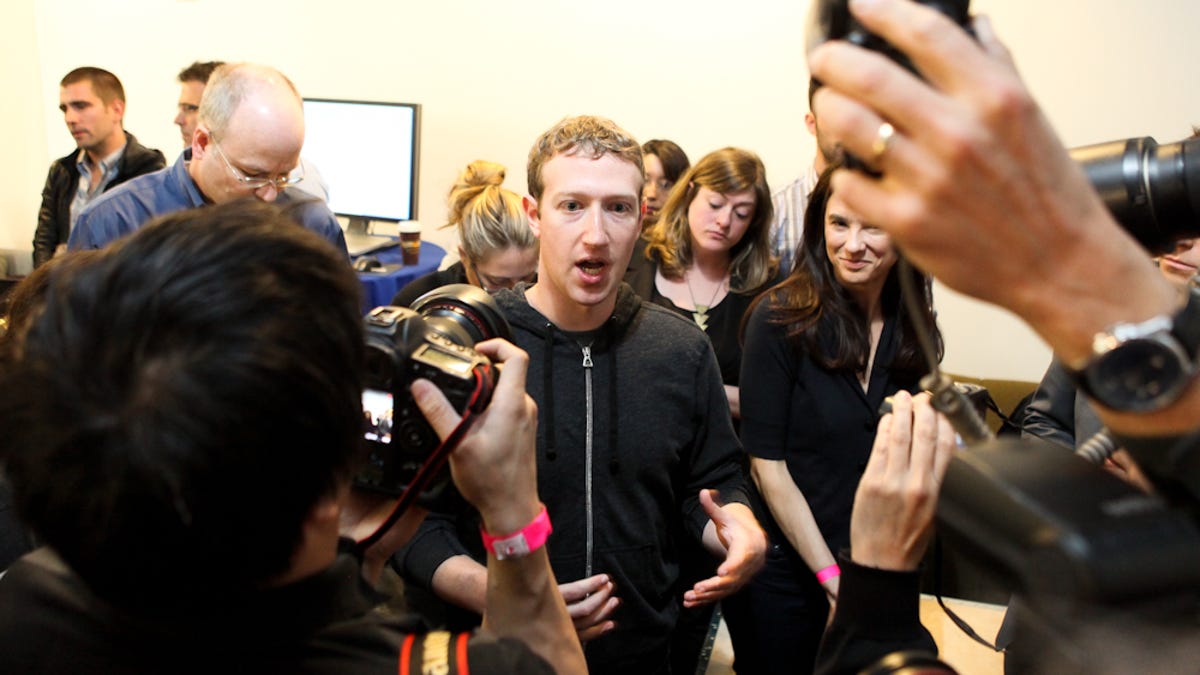Facebook makes risky bet on News Feed ads that track you
The social network's latest attempt to goose revenue exposes an elephant in News Feed: advertisers are always watching.

Facebook announced Tuesday that it had started a small test to let advertisers and agencies use Facebook Exchange (FBX) to serve retargeted ads -- specifically called "Page post link ads" -- to your News Feed, which, of course, is Facebook's prime real estate. These ads take into account people's browsing behavior outside Facebook, as captured through cookies, with the aim of offering up messages about products they've already shown interest in.
Previously, Facebook was only letting advertisers pitch members with these types of ads, which link out to landing pages and allow for conversion-tracking, in the oft-ignored right-hand sidebar of the site. Now that the ads are running in News Feed, Facebook members can't ignore them. That's great for advertisers, fantastic for Facebook, especially as its under pressure to boost revenue, but it's a risky maneuver that reminds people that they're always being watched.
"It's going to be interesting to see if consumers balk at this," Rebecca Lieb, digital advertising analyst with Altimeter Group, told CNET.
It's not that consumers are unfamiliar with retargeted ads. These types of units, which follow people as they browse the Web, have been around for years, and are a particular favorite with display advertisers -- primarily because they work. Rather, Lieb cautions, it's the coupling of personal data with prominent placement in News Feed, an unmistakable zone, that could be off-putting and sound the creepy alarm.
The ads are low-hanging fruit: so easy to harvest that Facebook can't help itself even though they may leave a sour taste.
"You looked at that laptop. You looked at that purse. You looked at those shoes. And there they are in your News Feed," Lieb said. "There are still plenty of consumers who don't understand how this works and might find this a little jarring ... not that it hasn't happened to them before, but because it happens in their Facebook News Feed."
The placement is further amplified by the twice-as-big size of advertisements running in Facebook's redesigned News Feed.
Creepy though the ads may be, they bring with them the promise of higher returns for advertisers and more immediate revenue for Facebook.
By December 2012, Facebook said FBX served nearly one billion impressions and supported more than 1,300 advertisers each day, which means demand was already high prior to the retargeted ads appearing in News Feed. Adobe's advertising customers running retargeting campaigns through FBX noticed 70 percent higher conversion rates than the average rate from all eight supply sources studied, according to results published in February.
"This is a quicker revenue win for Facebook," Lieb said.
These retargeted units, unlike Facebook's Sponsored Story unit, are far from nuanced. Instead of garnering more "likes," shares, and comments, advertisers can buy the right to sell you something they know you checked out, and they'll know, not infer, whether the message worked. As such, Lieb believes Facebook can charge a higher premium for the units and sell more. The company is speaking to advertisers in a language they understand, she said.
Facebook, by adding retargeted ads to News Feed, appears to be talking in a dialect that investors can better interpret as well. The social network's stock, which has steadily fallen since its fourth-quarter earnings report, fared unusually well Wednesday. After losing 20 percent in value in less than two months, Facebook shares ended the day up more than 3.5 percent at $26.09.
FBX-delivered ads in News Feed are a potential stopgap -- a Plan B revenue-growth strategy that appeases advertisers and investors as the company figures out how to profit from units that are more native to the Facebook experience.
While Facebook educates advertisers on more complex, more customized products -- a.k.a. content marketing in the form of Sponsored Stories linked to status updates -- FBX-delivered Page post link ads in News Feed offer advertisers a highly targeted, but not highly customized product, Lieb said.
Facebook's biggest challenge will be proceeding cautiously enough so as not to scare people away but expeditiously enough to grow revenue by large enough margins that satisfy investors, a bunch that has proven fickle in its favor for the company's business.

